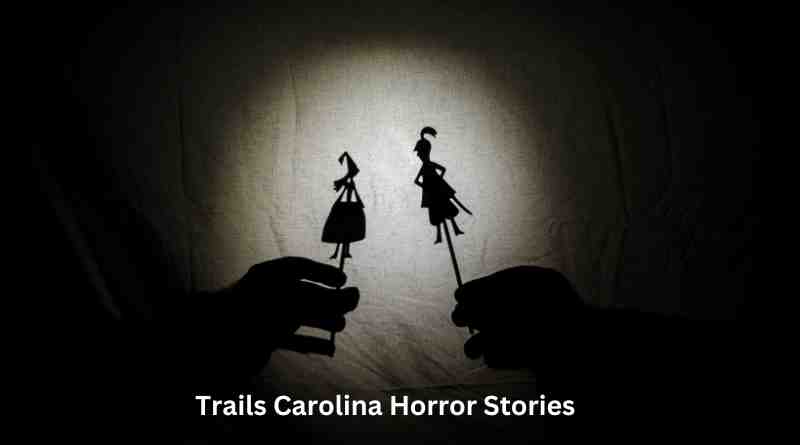The dense forests and rugged terrains of Carolina have long been a canvas for the human imagination, a place where the boundaries between the known and the unknown blur. Within this natural enigma lies a particularly intriguing chapter, one that delves deep into the human psyche amidst the wilderness. The Trails Carolina Horror Stories are not just tales of eerie encounters or mysterious happenings; they are a profound exploration of the human condition, a journey through the wilderness of emotions that challenge and shape us. This article aims to shed light on these narratives, offering insights into the complex interplay between nature, fear, and personal growth.
The Genesis of Fear in the Wilderness
The concept of fear in the wilderness is as ancient as humanity itself. In the vast expanses of uncharted territories, where the whisper of the wind and the crackle of twigs underfoot can send shivers down one’s spine, fear finds a fertile ground. Trails Carolina, with its sprawling landscapes and secluded paths, presents the perfect backdrop for fear to manifest. However, these horror stories transcend the superficial scares of folklore; they tap into the primal fears of isolation, loss, and the unknown. They reflect the internal wilderness we navigate when faced with the raw forces of nature.
Echoes of the Past: Historical Context
To understand the essence of Trails Carolina horror stories, one must delve into the historical context that has shaped this region. The Carolinas have a rich tapestry of history, marked by conflicts, settlements, and encounters between cultures. This history has imbued the land with a sense of mystery and melancholy, elements that are often reflected in the horror stories. The tales, while modern in their settings, carry the echoes of the past, of lives lived and lost, of battles fought both externally and internally. They serve as a reminder of the indelible marks history leaves on a landscape and its people.
The Nature of the Beast: Psychological Underpinnings
At the heart of Trails Carolina horror stories lies a complex psychological exploration. These narratives are not merely about external threats lurking in the shadows but are deeply rooted in the psychological battles that individuals face. The wilderness acts as a mirror, reflecting our deepest fears, insecurities, and desires. It forces characters—and through them, readers—to confront their inner demons, to face the parts of themselves that they have been running from. The horror stories thus become a vehicle for examining themes of survival, resilience, and the human capacity for both darkness and light.
Survival Instincts: The Human-Environment Interaction
One of the most compelling aspects of Trails Carolina horror stories is the portrayal of human-environment interaction. The wilderness challenges characters in ways that are both physical and mental, testing their survival instincts. This interaction is a dance between respect and fear, knowledge and ignorance. Characters must learn to read the signs of the environment, to adapt and coexist with the natural world. These stories highlight the importance of understanding and respecting the power of nature, as well as the consequences of underestimating it.
Pathways to Transformation: Personal Growth and Realization
Beyond the horror and the fear, Trails Carolina stories are ultimately about transformation. The wilderness, with all its trials and tribulations, becomes a crucible for change. Characters emerge from their experiences fundamentally altered, having gained insights into their own capacities and limitations. The stories are a testament to the idea that facing one’s fears, embracing the unknown, and enduring hardships can lead to profound personal growth and realization. They offer hope that even in the darkest of times, there is a potential for enlightenment and renewal.
The Legacy of the Land: Environmental and Cultural Preservation
Amidst the horror and the psychological drama, Trails Carolina stories also carry an underlying message of environmental and cultural preservation. They remind us of the importance of protecting these wild spaces, not just for their ecological value but also for their cultural significance. The stories serve as a bridge between the past and the present, urging us to honor the legacy of the land and the diverse narratives it holds. In doing so, they encourage a deeper connection with the natural world, one that is rooted in respect, awe, and stewardship.
Conclusion: Embracing the Wilderness Within and Without
Trails Carolina horror stories, with their rich tapestry of fear, history, psychology, and nature, offer a unique lens through which to explore the human condition. They challenge us to consider the ways in which the wilderness, both external and internal, shapes our fears, our choices, and our identities. By navigating these stories, we are invited to confront our own wilderness of emotions, to explore the shadows and the light within ourselves. Ultimately, these narratives encourage us to embrace the journey, with all its horrors and beauties, as a pathway to understanding, growth, and connection with the world around us.
Read also: check

